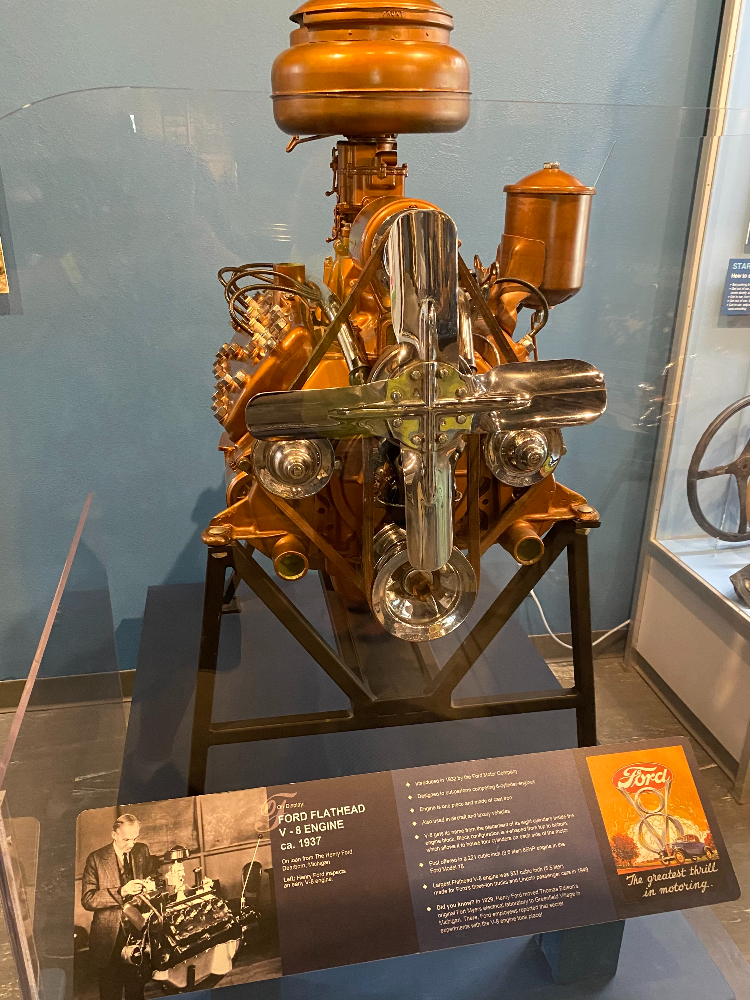Sign up for daily news updates from CleanTechnica on email. Or follow us on Google News!
The EV revolution is over! We must run and tell the king!! So sayeth the anti-electric car nabobs over and over (and over) again. Tesla is slashing employees, and doing it in the most unkind way possible by simply deleting their security credentials overnight so when they arrive for work in the morning, they find they can no longer get in. Mercedes is backing away from its “we’re going all in on EVs” plan and extending production of internal combustion engines until 2121 or until hell freezes over, whichever comes first.
GM and Ford are running around with their hair on fire trying to get hybrids and plug-in hybrids into production. GM’s approach is comical. It had a pretty good electric car called the Chevy Bolt whose owners loved it, so of course GM stopped making it before a replacement was ready. It introduced the Chevy Blazer EV, only to find the software was so flawed it had to issue a stop sale order on them until it could fix the glitches. And they wonder why their electric car sales are so low? We wonder how Mary Barra still has a job.
Hogwash, Bloomberg says in market analysis published on May 28, 2024. For every suggestion of an EV slowdown, another point of view sees an adolescent industry on the verge of its next growth spurt. In fact, for most automakers, the first quarter was a blockbuster for electric car sales. Six of the 10 biggest EV makers in the US saw sales grow at a scorching pace compared to a year ago. Electric car sales were up 56% at Hyundai and Kia and 86% at Ford. A sampling of April sales also show strong gains.
A Tale Of Two Electric Car Markets
Consumers are flocking to some brands in record numbers, while turning their backs on those with inferior battery range, slower charging, and high prices, Stephanie Valdez-Streaty, director of industry insights at Cox Automotive, told Bloomberg. Delays of new vehicles, though temporary, added to the perception of a market running out of steam. “We’re still seeing growth in demand, just not at the same pace for every brand. Right now Tesla doesn’t have new models, Ford doesn’t have a lot in the pipeline. But Hyundai, BMW, Kia, Cadillac — they’re really moving the needle forward.”
The two companies with the worst start to the year were General Motors and Tesla. Both are victims of their own product cycles, Bloomberg says. This year, GM discontinued the Chevy Bolt, and Tesla interrupted production of the Model 3 for updates to that car. Nevertheless, sales of electric cars in the US grew 23% in the first quarter of 2024.
Despite repeatedly shooting itself in the foot with its electric car strategy — cars that were supposed to start at $35,000 being introduced with prices $20,000 higher, for instance — Bloomberg suggests GM appears to be on the brink of becoming the biggest driver of EV growth in the US. It has committed to electrifying some of its biggest brands, which are finally reaching production after years of delays. That includes a $35,000 Equinox SUV and its sibling Blazer EV, as well as Silverado and GMC Sierra electric pickups with up to 450 miles of range.
These vehicles all rely on the new Ultium batteries coming from the GM joint venture with LG Chem. Problems with those batteries, and with GM’s new EV software, tapped the brakes on GM’s EV plans last year. Had Ultium arrived on time, in the numbers GM had predicted, the mood around the US EV market might have been exuberant going into 2024.
GM CEO Mary Barra says Ultium problems are now in the rearview mirror and the company expects to produce 200,000 to 300,000 Ultium-based EVs this year — a 50-fold increase from the 5,800 Cadillac Lyrics sold in Q1. “I think it was over-hyped and now it’s probably under-hyped,” Barra recently said about the US outlook for EVs. “The truth is somewhere in the middle.” For all the talk of an EV slowdown, many longer term forecasts haven’t budged. In April, the International Energy Agency estimated that US sales of fully electric vehicles will soar to 2.5 million in 2025, up strongly from 1.1 million last year.
The Tesla Piece Of The Electric Car Puzzle
The biggest source of uncertainty for the US outlook is the product pipeline at Tesla, which is responsible for half of the country’s EV market. Tesla relies on just two cars — the Model 3 sedan and the Model Y SUV — for 95% of its sales. It repeatedly slashed prices last year to maintain growth before its first quarter slump.
Tesla’s calendar of new vehicle launches is essentially blank, apart from an aspirational Roadster 2.0 supercar and a vague hint by Elon Musk last month of “new vehicles, including more affordable models,” coming next year. It’s too soon to gauge long term demand for Tesla’s Cybertruck pickup, which is currently only offered as a $120,000 founders edition. In August, Tesla plans to unveil a self-driving “Cybercab” without a steering wheel. There’s plenty of uncertainty about the readiness of the underlying technology and about what will propel Tesla sales growth until it’s ready.
Adding to the uncertainty is the state of Tesla’s high speed Superchargers in the US. The company recently opened its network of more than 2,000 US charging stations to a smattering of non-Tesla owners, who can access the chargers with an adapter. But in the middle of that transition, Musk fired Tesla’s 500-person Supercharger staff as part of the company-wide layoffs. He has since clarified that Tesla will continue to expand the Supercharger network, albeit at a slower rate, and has hired back some of the dismissed employees.
Mass Production Is Key
Tesla’s gap year leaves an opening for other EV makers, but there’s a self-fulfilling aspect to all the talk of an EV slowdown in the US. Some automakers are concluding from Tesla’s stumbles that they should hold back their own investments until there’s more market clarity, said Corey Cantor, an EV analyst at BloombergNEF. Instead they should be following the lead of Hyundai and GM by aggressively introducing affordable electric car models to build economies of scale. “Automakers are probably freaking out too much, as usual, but there is a bit of a Tesla issue,” Cantor said. “If they want to start taking market share, or even just perform at a high level, they need to start producing EVs at mass volume.”
Those larger volumes are coming. This year Hyundai, GM, and Ford are each on track to sell 100,000 electric cars, which could mark a turning point for US electric car production. Some of the biggest EV laggards are also jumping into the US market this year. Stellantis is expected to start selling its first electric Jeeps and Ram pickups, and Hyundai is unleashing a diverse stable of EVs for its new factory opening in Georgia in October. Honda just started delivering the Honda Prologue and Acura ZDX and is building a production hub in Ohio for additional EVs coming in 2025. It also is touting a huge investment in electric car battery production in Canada.
US and worldwide EV sales are both expected to grow roughly 20% this year. That’s less than the blistering 46% expansion the US experienced in 2023, but that level of growth can’t be sustained for long. If the global market for EVs continued at this “slowdown” pace indefinitely, virtually all cars would be electric in a decade, Bloomberg said.
The Takeaway

I was in Fort Myers, Florida, today visiting the Edison/Ford museum. It was eye-opening for a number of reasons, not the least of which is that the Model T was originally priced at $950 in 1908. Thanks to the economies of scale made possible partly by Henry Ford’s assembly line and partly by the very success of the car, that price dropped to under $300 by 1924. The message? If you want less expensive electric cars, get busy making them so those economies of scale can be fully realized.
The other lesson I learned is that vehicles tend to get better and better over time, as new technologies become available. Exhibit One is the early Ford pickup truck pictured above, which is the great-great-grandfather of today’s Ford F-150. It’s hard to believe they were both built by the same company. It made me realize that we are at the beginning of the electric car revolution and can expect the cars for 3, 5, and 10 years from now to offer amazing improvements we can scarcely imagine today.

Here is a Ford flathead V-8 engine. At one time, it represented the pinnacle of automotive engineering. Today it is an historical relic in a world where BYD says its latest engine is capable of driving 80 miles on a gallon of gas. Both are internal combustion engines, but otherwise have almost nothing in common. That suggests enormous improvements in electric car technology are in the offing.
The upshot of all this is that, far from fading from the automotive scene, electric cars have just begun transforming the world of transportation and amazing things — and huge sales numbers — are just around the corner. So ignore the anti-EV hype that saturates the right wing press and social media. Relax, put up your feet, and watch the EV revolution unfold. It is going to be amazing to watch. Don’t believe me? Just watch.
Have a tip for CleanTechnica? Want to advertise? Want to suggest a guest for our CleanTech Talk podcast? Contact us here.
Latest CleanTechnica.TV Videos
CleanTechnica uses affiliate links. See our policy here.





